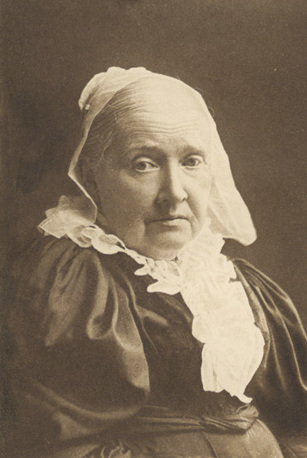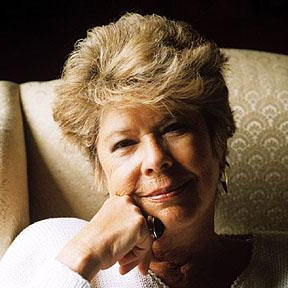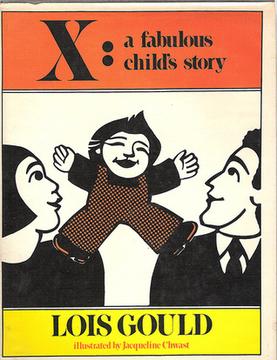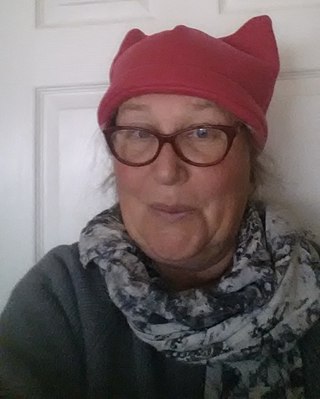
Sense and Sensibility is the first novel by the English author Jane Austen, published in 1811. It was published anonymously; By A Lady appears on the title page where the author's name might have been. It tells the story of the Dashwood sisters, Elinor and Marianne as they come of age. They have an older half-brother, John, and a younger sister, Margaret.

Julia Ward Howe was an American author and poet, known for writing the "Battle Hymn of the Republic" as new lyrics to an existing song, and the original 1870 pacifist Mothers' Day Proclamation. She was also an advocate for abolitionism and a social activist, particularly for women's suffrage.

Heather Has Two Mommies is a children's book written by Lesléa Newman with illustrations by Diana Souza. First published in 1989, it was one of the first pieces of LGBTQ+ children's literature to garner broad attention.

Laura Elizabeth Howe Richards was an American writer. She wrote more than 90 books including biographies, poetry, and several for children. One well-known children's poem is her literary nonsense verse Eletelephony.

Jane and the Dragon is a series of children's books written and illustrated by Martin Baynton. The original trilogy consists of Jane and the Dragon (1988), The Dragon's Purpose (1989), and Jane and the Magician (2000). In 2008 two further books followed: Three's a Crowd and A Dragon's Tail.

Marilyn French was an American radical feminist author, most widely known for her second book and first novel, the 1977 work The Women's Room.

Florence Rosenfeld Howe was an American author, publisher, literary scholar, and historian who is considered to have been a leader of the contemporary feminist movement.

Sallie Bingham is an American author, playwright, poet, teacher, feminist activist, and philanthropist. She is the eldest daughter of Barry Bingham, Sr., patriarch of the Bingham family of Louisville, Kentucky.

Aunt Lute Books is an American multicultural feminist press based in San Francisco, California. The publisher also seeks to work with and support first-time authors.

The Feminist Press at CUNY is an American independent nonprofit literary publisher of the City University of New York, based in New York City. It primarily publishes feminist literature that promotes freedom of expression and social justice.
Women's Studies Quarterly, often referred to as WSQ, is a biannual peer-reviewed academic journal of women's studies that was established in 1972 and published by The Feminist Press. The Feminist Press was founded by Florence Howe in 1970. Before changing its name to Women's Studies Quarterly in 1981, the publication was titled Women's Studies Newsletter. The name change indicated a shift in the publication's purpose and content.
Perri Klass is an American pediatrician and writer who has published extensively about her medical training and pediatric practice. Among her subjects have been the issues of women in medicine, relationships between doctors and patients, and children and literacy. She is the author of both fiction and nonfiction novels, stories, essays, and journalism. Klass is Professor of Journalism and Pediatrics at New York University, and Medical Director of Reach Out and Read, a national childhood literacy program that works through doctors and nurses to encourage parents to read aloud to young children, and to give them the books they need to do it. She is a member of the National Advisory Council of the National Institute of Child Health and Human Development and has been nominated by the President of the United States to the Advisory Board of the National Institute For Literacy.
Ros de Lanerolle, also known as Rosalynde Ainslie, was a South African activist, journalist and publisher. Having settled in Britain in the 1950s, she campaigned actively against apartheid, and later became a pioneering figure in women's publishing in the UK, called by Florence Howe "the doyenne of feminist publishers".
Kai Cheng Thom is a Canadian writer and former social worker. Thom, a non-binary trans woman, has published four books, including the novel Fierce Femmes and Notorious Liars: A Dangerous Trans Girl's Confabulous Memoir (2016), the poetry collection a place called No Homeland (2017), a children's book, From the Stars in The Sky to the Fish in the Sea (2017), and I Hope We Choose Love: A Trans Girl's Notes from the End of the World (2019), a book of essays centered on transformative justice.

When Megan Went Away is a 1979 children's picture book written by Jane Severance and illustrated by Tea Schook. It is the first picture book to include any LGBT characters, and specifically the first to feature lesbian characters, a distinction sometimes erroneously bestowed upon Lesléa Newman's Heather Has Two Mommies (1989). The book, published by the independent press Lollipop Power, depicts a child named Shannon dealing with the separation of her mother and her mother's partner, Megan.

X: A Fabulous Child's Story, written by Lois Gould, was first published as a short story in the magazine Ms. in 1972 and republished by Daughters Publishing as a picture book in 1978 with illustrations by Jacqueline Chwast. The book tells the story of X, a child raised as part of an experiment to keep its gender unknown to everyone but its parents and the scientists conducting the experiment.

Lots of Mommies is a 1983 picture book written by Jane Severance and illustrated by Jan Jones. In the story, Emily is raised by four women. Other children at her school doubt that she has "lots of mommies" but when she is injured, her four parents rush to her aid and her schoolmates accept that she does indeed have "lots of mommies".
Hurricane Alice: A Feminist Review was a feminist journal edited by a volunteer group of academics, graduate students, university staff, and community members from 1983 to 1998. From its first issue in the spring of 1983 through the end of 1995, it was housed in the Department of English at the University of Minnesota, Twin Cities. The journal moved to Rhode Island College in 1996, where it continued publication until 1998. An outgrowth of second-wave feminism, Hurricane Alice sought to address local, regional, and national audiences by publishing a variety of feminist perspectives on matters of social, political, and cultural concern. It included original essays, reviews, interviews, and creative writing by established and emerging writers, such as Jewelle Gomez, Susan Griffin, Alice Walker,and Nellie Wong, as well as original graphics by area artists. The editors were committed to a feminist understanding that all oppressions are connected and that coalitions across divides of race, class, sexuality, and geography are the path to liberation. That commitment led to the journal's consistent attention to those interconnections, including publishing the work of Black, Indigenous, and other scholars and writers of color as well as that of lesbian and working-class women of all races.

Jane Severance is an American author of children's literature and an educator. She has published three books for young readers, including her first work, When Megan Went Away (1979), the first children's picture book to include LGBT characters.

Lollipop Power, Inc. was a nonprofit American independent publisher of children's books. Based in Chapel Hill, North Carolina, the group emerged from a culture of feminist organizing as an outgrowth of a discussion group in 1969 or 1970. Operating as a publishing collective of a rotating cohort of around 10 members, the press published non-sexist, non-racist picture books for children to counter depictions of gender-stereotyped roles in mainstream children's books.















